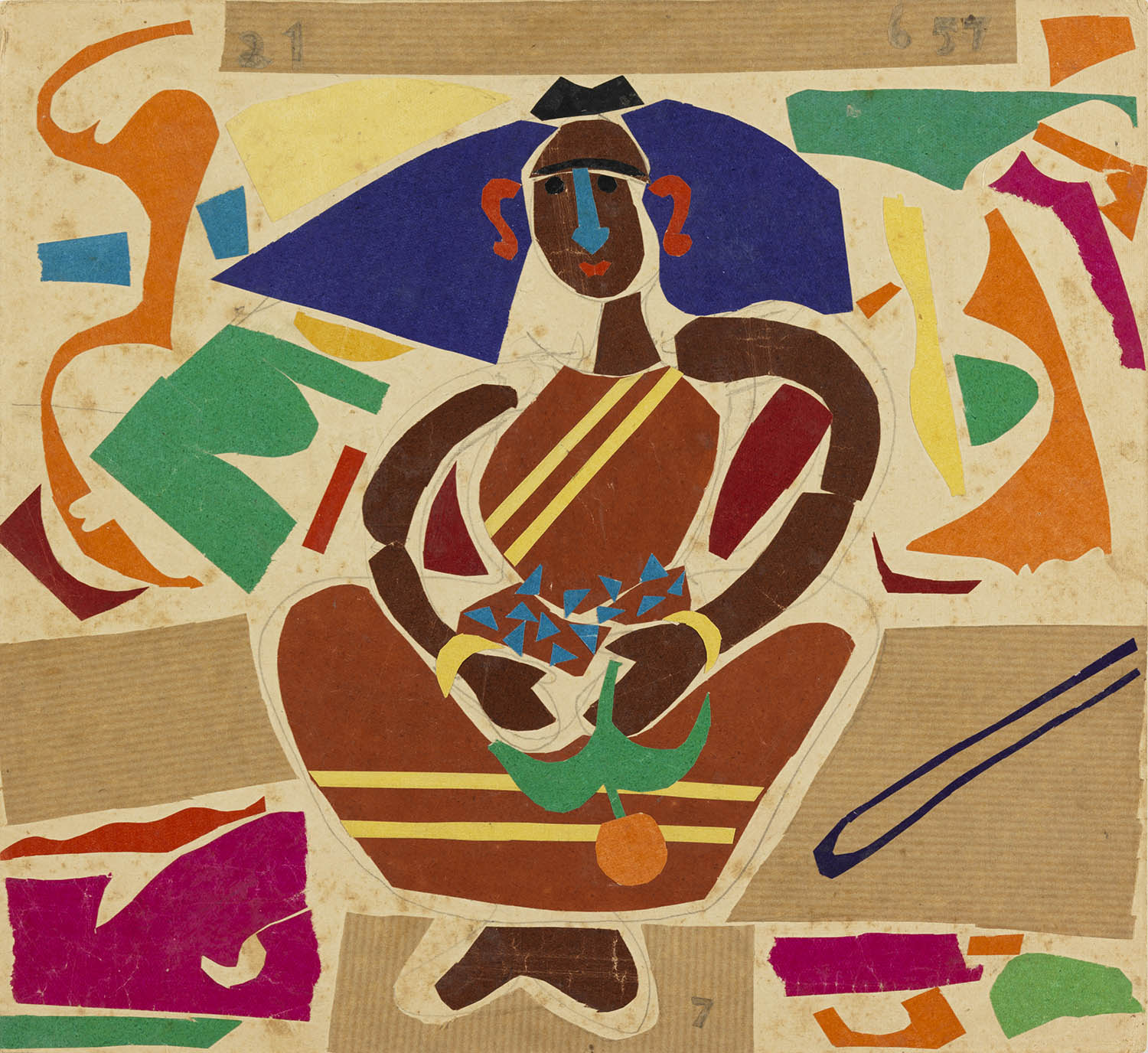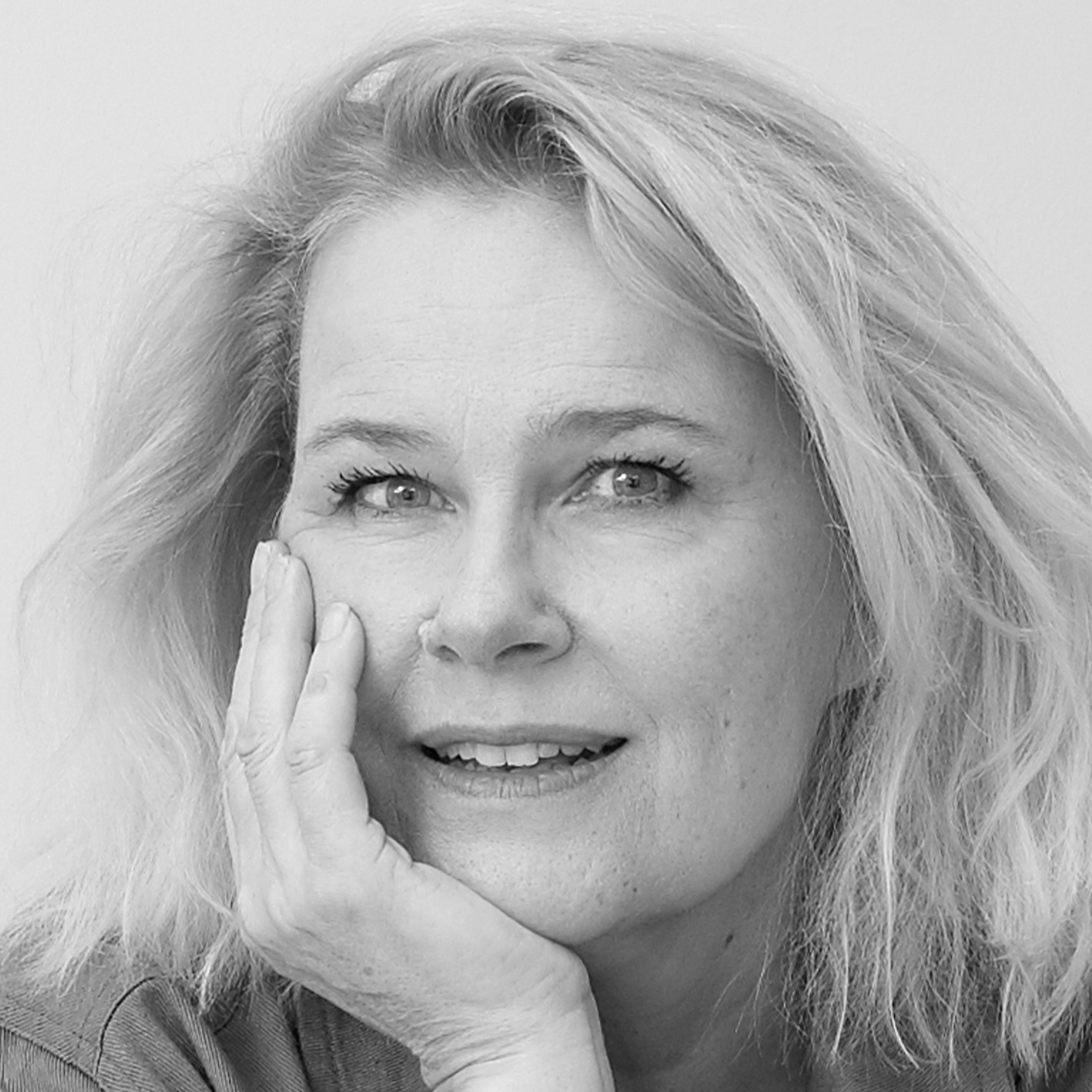A figure of rope rears up before you like a serpent from a basket, vivid with animal presence. Another seems to bow its head inside heavy woven cloaks. Fibrous forms in twisted or woven hemp, dyed forest green, marigold and pink, seem both vegetable and human, somewhere between blossoming plants and the soft folds of a female anatomy.
The Indian artist Mrinalini Mukherjee (1949-2015) made these awesome, larger-than-life effigies by twisting, knotting and weaving natural fibre in ways so mysterious it is not obvious how they find, still less retain, their standing shapes at the Royal Academy. The story told in this show is hers, featuring other South Asian artists vital to her career, though Mukherjee’s originality shines out.

‘Fibrous forms seem both vegetable and human’: Mrinalini Mukherjee’s Pakshi, 1985, made from dyed fibre
The collages of her famous father, Benode Behari Mukherjee, featuring human figures, fruit and animals are lithe and harmonious, jubilant as any Matisse. The artist was going blind, moreover, his spry imagination transmitted through ingenious fingertips. Mrinalini’s mother, Leela Mukherjee, is represented by hefty wood carvings and lighter watercolours of hazy glades, sociable figures brought forwards by darting coloured lines.
There are other giants of Indian culture here, including the modernist painter Jagdish Swaminathan, Mrinalini’s spiritual mentor. A bird and a stone hover, inexplicably, in a scorching yellow sky in his painting Lily By My Window (1970); the lily’s roots are equally adrift. Nilima Sheikh’s 2023 painting Home-Land is an enchanting panorama of mountaintops, scattered trees and tiny travellers passing through a golden land. Wild birds circling ever-upwards on what appear to be Indian ink scrolls, by Gulammohammed Sheikh, are in fact worked in contemporary acrylic on board.

Benode Behari Mukherjee’s Lady With Fruit, 1957, is ‘jubilant as any Matisse’
You peer in, around and under all kinds of artwork – glinting ceramics, tiny etchings, mazes of painted sails fluttering from the ceiling. Indian nights, myths, cities are interspersed with streets riots or sacred deities rising above mystic rivers. The show is dazzlingly diverse in its media, too, with a deep emphasis on craftsmanship and the local land, the colours of the earth, actual fragments of rocks and trees.
Related articles:
But it is also very uneven, as you might expect from any pocket survey of South Asian art over several decades. There are weak imitations of Picasso and bizarrely coarse night scenes. No matter how good it is to go somewhere else in art – especially somewhere new, for the Royal Academy – the show is overburdened with the fashionable purchases of private collectors.
But it is worth it to see an exceptional sculpture made by Mrinalini Mukherjee after she had ceased to make the fibre works that will have a substantial retrospective at the Hepworth Wakefield next year. This is a blackened bronze relief that stands proud of the wall with a landscape, near and far, separated by volumes of space. Up close, creatures lie flat upon a cliff-edge that plunges into darkness. Rising above them is a night sky flecked with planets and starry constellations. Neither a sculpture, nor quite a painting, it is its own invention: a marvellous new thing in the world.
A Story of South Asian Art: Mrinalini Mukherjee and Her Circle is at Royal Academy of Arts, London, until 24 February 2026
Photographs by Royal Academy/JFernandes



